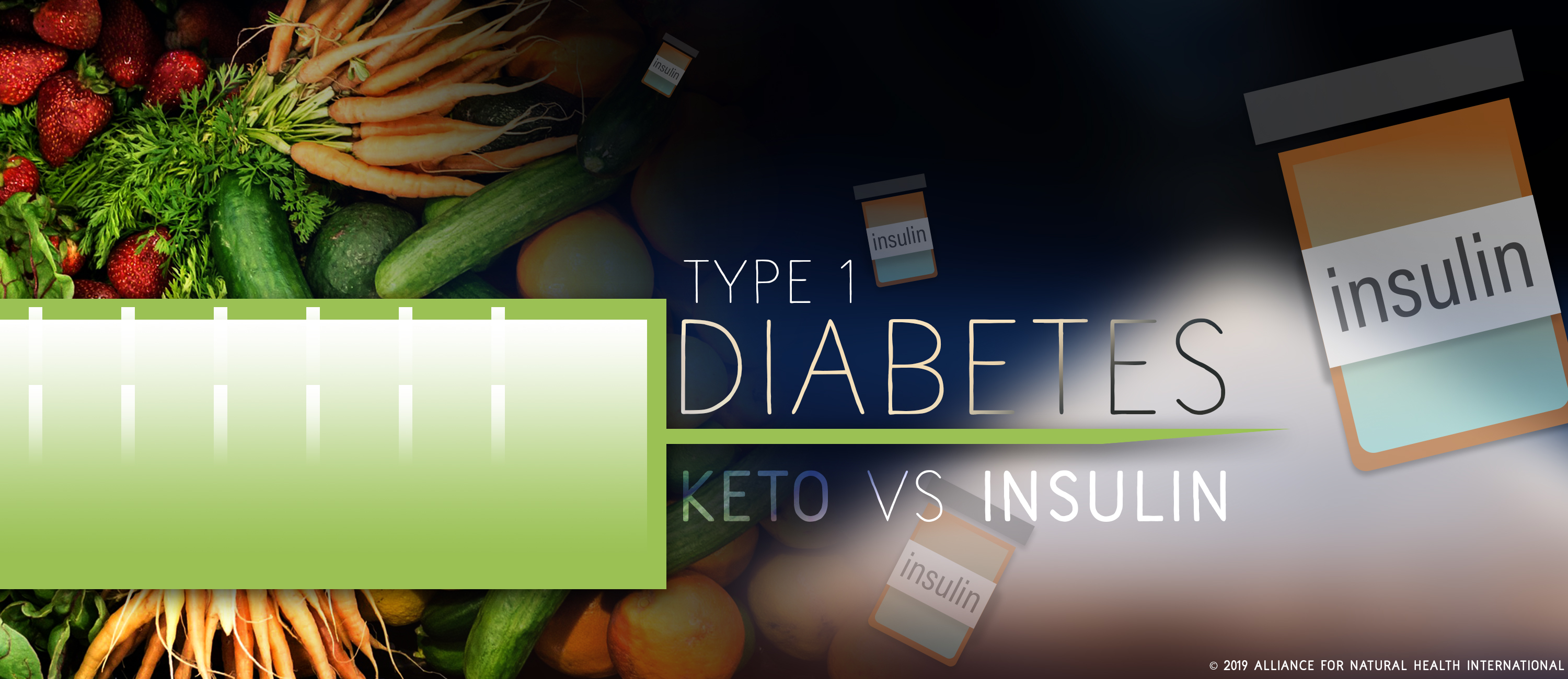You’re unlikely to have missed the fact that the airwaves are awash with information, for and against, low carb high fat (LCHF) or ketogenic diets for type 2 diabetes. But what if you’re among the 1 in 10 diabetics that have type 1 diabetes (T1D) or Latent Autoimmune Diabetes of the Adult (LADA)? Whilst you can find bits and pieces online if you conduct your own searches, there’s precious little about it in the mainstream media. You aren’t likely to hear much from your doctor either about using diet (and lifestyle) to lower your insulin needs. Let’s face it – you’re channelled straight into a drug-based solution.
T1D: big business
Why, you might ask? Without being too cynical, it’s probably because the global T1D market is expected to reach USD 25.52 billion by 2024. That’s no small change. Definitely worth protecting given that many type 1 diabetics reduce their insulin requirement by at least half by changing to a ketogenic diet. Well, that’s the view of one doctor – who’s in a position to know. We’ll introduce him below.
In reminding ourselves that the low carb ‘keto’ diet was the treatment for all diabetics before the discovery of insulin in 1921, we profile the experience of Dr Keith Runyan, himself a type 1 diabetic. He’s been living on a ketogenic diet since 2012. His book, The Ketogenic Diet for Type 1 Diabetes and his blog site offer a T1D roadmap with years of data on his ‘numbers’.
Dr Runyan’s keto experience
One of most dramatic changes that Dr Runyan found personally has been the lack of ‘hypos’ or other hypoglycaemic symptoms. He puts this down to the fact that ketones are a brain fuel that substitutes for glucose. In addition to this are the benefits that come from elevated levels of beta-hydroxybutyrate (BHB) – the most abundant ketone. Benefits include: being a G protein (molecular switches inside cells) activator; stabilising immunity; being a substrate for our mitochondria (cellular energy factories); supporting the creation of new mitochondria; reducing inflammation; fuelling the brain, and; helping to protect against many diseases.
Dr Runyan began self-exploration and he happened upon the keto diet accidentally. Whilst his doctors were satisfied with his blood sugar control, the roller coaster of high and low blood sugars wasn’t much fun. The concept of the carb/insulin ratio is based on knowing how much carbohydrate one is eating to know how much insulin to take. Results are often unpredictable, even for a doctor, like Dr Runyan, even if he weighed all his food.
His keto-adaptation process was stepwise and gradual, but over a 2-year period his insulin dose has reduced to half of what it had been previously. When you eat less carbs, you need less insulin. In effect, a diabetic suffers from a condition that can be regarded as ‘carbohydrate toxicity’. However, more importantly he has achieved normal blood sugar and HbA1c levels that have remained stable. All his data can be found on his blog, the Ketogenic Diabetic Athlete.
Is fundamental change on the way?
Dr Runyan is very definite in his assertion that there are no actual published peer-reviewed data to show that a ketogenic diet is a harmful diet for a T1D. Indeed, endocrinologist Dr Martin de Bock, presenting at last year’s American Diabetes Association (ADA) conference on children with T1D, confirmed that one can get exceptional glycaemic control on a very low carbohydrate diet (VLCD). Whilst he raised some potential concerns, he also referenced a 2018 study on adults and children with T1D, showing dramatic improvements and “remarkable glucose stability” with a VLCD.
Please share widely!
If you’re a type 1 diabetic or know someone who is, please share this information as widely as you can. Dr Runyan’s experience needs more exposure and could help thousands who’ve been told that keto diets aren’t relevant for type 1 diabetics.
Type 1, type 2, LADA – what’s the difference?
Only around 6% of diabetics have type 1 diabetes, which is an autoimmune disease. Whilst exercise is very good for type 2, it’s not so good for type 1. Exercise makes it more difficult to control blood sugar levels due to release of stress hormones (cortisol, glucagon and adrenaline). The more intense the exercise, the worse the effect can be as a type 1 can’t make insulin, so therefore can’t compensate for the release of stress hormones. The remaining 94% of diabetics have type 2 diabetes. A disease which largely affects middle-aged adults and is caused by metabolic dysregulation. It’s also a disease caused by insulin resistance, which can have a genetic component, but is most commonly created by obesity, overdependence on sugars and starchy carbs and unsupportive lifestyle choices (lack of activity, chronic stress, constant eating). Like type 1 diabetics, type 2s also suffer from carbohydrate toxicity. Globally, health care systems are reaching crisis point in terms of how so many sick people are going to be managed. The completely incorrect and inadequate, protectionist and often incorrect advice given by governments and the mainstream medical establishment being a large contributing factor. If you are born with a genetic predisposition, then conventional highly processed foods, high sugar, low healthy fats diet will create a perfect foundation for ‘diabesity’. LADA is often misdiagnosed as type 2 diabetes because it’s late onset. It’s also an autoimmune disease that has a close link with gluten sensitivity. Once the body mounts a defence against gluten, through a process of protein mimicking, the new target becomes the beta cells in the pancreas that make insulin. Dr Runyan explains that once people get down to less than a quarter of the normal complement of functioning beta cells, they’ll suffer high blood sugar and develop diabetes. With LADA the symptoms come on slowly, unlike T1D that strikes in childhood.








Comments
your voice counts
17 January 2019 at 11:34 am
This is a general comment that is also for those who fear to seek health freedom or meet fears in living such a willingness, and live through them in shifting our sense of self and world to a qualitatively greater appreciation.
The nature of the beast is of awakening to the realisation that 'sustainable healthcare' is in truth a sickness farming business where the population - including oneself is a captive 'asset' to a mind or intent running within and through our wishes, fears and beliefs such as to seem to offer security in compliance and danger in opening any challenge to the setting and control of the social and official narrative, which is dictated as a top-down edict from behind a mask of expertise, concern and necessity.
The nature of the deceit is itself sickening to uncover, but an uncovered cause is a cause that can be brought more into the light of a calm awareness, one step (or active willingness) at a time.
A negative 'Economy' necessitates the sacrifice of the many to the support of whatever is felt to be 'too big to fail'. The nature of our entanglement is of a complex web of seemingly necessary lies where a false foundation leads to a house of cards. The truth of a false foundation is that it is not there. Only belief in it operates in place of true appreciation and fear-defined or fear-driven belief is our negatively defined and aligned sense of self.
Embodying an integrative sense of self and world is freeing our mind from reactive conflict of the fear-framed mind so as to look at it calmly and put it behind us because we are focusing of what we DO want as a positive, rather than in terms of what we don't want. Aligning in health and wholeness of being is unified and integrated purpose. But a captive mind under fear and division is conflicted and seeking to sustain its conflicted and separate self-sense under narrative identity continuity - such as to keep conflict 'under control' while persisting in its 'cause'. This is like the key to health and freedom being hid in a darkness associated with great fear such that the mind is predicated to protect against - and so in effect we fear our true freedom while 'loving' a state of capture in which we can seem to have some relative and conditional freedoms as the freedom NOT to face, own or meet what we are not yet ready or willing to open to. Yet even acknowledging this, is a conscious acceptance from which perspective opens some shifted sense of possibility and curiosity.
The attempt to outsource guilt and consequence to others as a way to protect our self is only seemingly possible in a state of dissociative dissonance. Guilt and fear are neither to be protected by denial nor made into a currency of exchange in masked power struggle, but undone as a basis from which to live by aligning in willingness for relational being even amidst the symptoms of conflict or inflammation. This is the growing of a new 'habit' in place of our conditioned reactive sense of self-protection that is actually self-evasion running as 'default, and is always and only our current or present responsibility as to what we are accepting and living from as true. Responsibility is freedom, but a misidentified or usurped sense of control operates failure (guilt and fear inadequacy) by design, and yet clings to it as its only 'life'.
So let us give witness to life as an extension of worthiness FOR life to the living rather than to systems of attempt to control life as 'risk' or threat management. Then let the law or system serve the 'Man' rather than sacrifice humanity to a blind and loveless mind of fear and hiding.
17 January 2019 at 1:28 pm
It makes sense that less carbs in the diet require less insulin and that less insulin will decrease hypo risk.
It is critical to stress that this approach is only suitable for people with T1 who are carb counting but NOT for T1s who are on set meals and a fixed insulin regime.
Your voice counts
We welcome your comments and are very interested in your point of view, but we ask that you keep them relevant to the article, that they be civil and without commercial links. All comments are moderated prior to being published. We reserve the right to edit or not publish comments that we consider abusive or offensive.
There is extra content here from a third party provider. You will be unable to see this content unless you agree to allow Content Cookies. Cookie Preferences